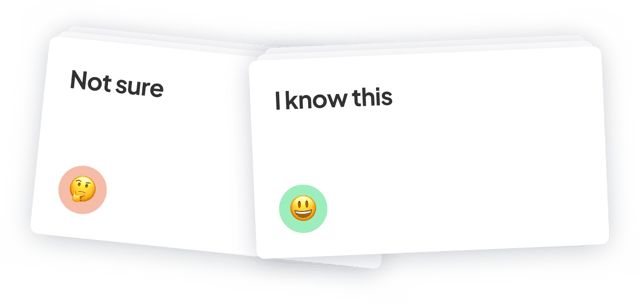2.4 Price Determination (Cambridge (CIE) IGCSE Economics) Flashcards
Exam code: 0455 & 0987
1/15
0Still learning
Know0
- FrontThe Price Mechanism
Define the price mechanism.
The price mechanism is the process where the forces of demand and supply determine the prices of goods and services in a market economy.

Sign up to unlock flashcards
Join for free to unlock a full flashcard set, track what you know,
and turn revision into real progress. - FrontThe Price Mechanism
Which three fundamental economic questions does the price mechanism help answer?
The price mechanism helps answer the three fundamental economic questions: what to produce, how to produce, and for whom to produce.
- FrontThe Price Mechanism
Prices act as and in the market, guiding the allocation of resources.
Prices act as signals and incentives in the market, guiding the allocation of resources.
Did this page help you?
Cards in this collection (15)
Define the price mechanism.
The price mechanism is the process where the forces of demand and supply determine the prices of goods and services in a market economy.
Which three fundamental economic questions does the price mechanism help answer?
The price mechanism helps answer the three fundamental economic questions: what to produce, how to produce, and for whom to produce.
Prices act as and in the market, guiding the allocation of resources.
Prices act as signals and incentives in the market, guiding the allocation of resources.
True or False?
A rise in the price of a good can act as both a signal and an incentive for producers to increase supply.
True.
A higher price signals strong demand and offers an incentive of greater profit, encouraging producers to increase supply.
How did the price mechanism operate in the global coffee market after 2021?
After 2021, a surge in demand and reduced supply raised coffee prices, which signalled producers to increase supply and invest in more coffee production. As a result, the market responded with greater output and prices later stabilised, showing efficient allocation of resources through the price mechanism.
Define market equilibrium.
Market equilibrium is the point where demand equals supply in a market, resulting in an agreed price and quantity for buyers and sellers.
What is excess demand in a market?
Excess demand occurs when the quantity demanded is greater than the quantity supplied at a given price, causing a shortage in the market.
What typically happens to prices when there is excess demand?
When there is excess demand, sellers raise prices to increase revenue and profits, which helps move the market back to equilibrium.
At a price where the quantity supplied is greater than the quantity demanded, there is in the market.
At a price where the quantity supplied is greater than the quantity demanded, there is excess supply in the market.
Define disequilibrium in a market.
Disequilibrium is a market situation where there is either excess demand or excess supply, meaning the market is not at equilibrium.
What is a demand and supply schedule?
A demand and supply schedule is a table showing the quantity demanded and quantity supplied of a product at different price levels.
At a price of $500 in the YEEZY trainers example, equals , so the market is in equilibrium.
At a price of $500 in the YEEZY trainers example, quantity demanded equals quantity supplied, so the market is in equilibrium.
How can a demand and supply schedule help identify equilibrium and disequilibrium?
A demand and supply schedule shows the quantities at different prices, allowing us to see where demand equals supply (equilibrium) and where there is excess demand or supply (disequilibrium).
In a market, the price is the price at which all goods offered for sale are sold at an acceptable rate.
In a market, the market clearing price is the price at which all goods offered for sale are sold at an acceptable rate.
True or False?
Excess supply in a market leads sellers to lower prices in order to clear their stock.
True.
When there is excess supply, sellers are incentivised to reduce prices to encourage more purchases and clear surplus stock.
Sign up to unlock flashcards
or
By signing up you agree to our Terms and Privacy Policy
- The Price Mechanism
- Market Equilibrium and Disequilibrium
- Causes & Consequences of Price Changes
- Calculation & Determinants of PED
- PED, Consumer Expenditure and Firms’ Revenue
- The Significance of PED for Different Stakeholders
- Calculation & Determinants of PES
- Understanding the Market Economic System
- Market Failure Terminology
- Causes & Consequences of Market Failure